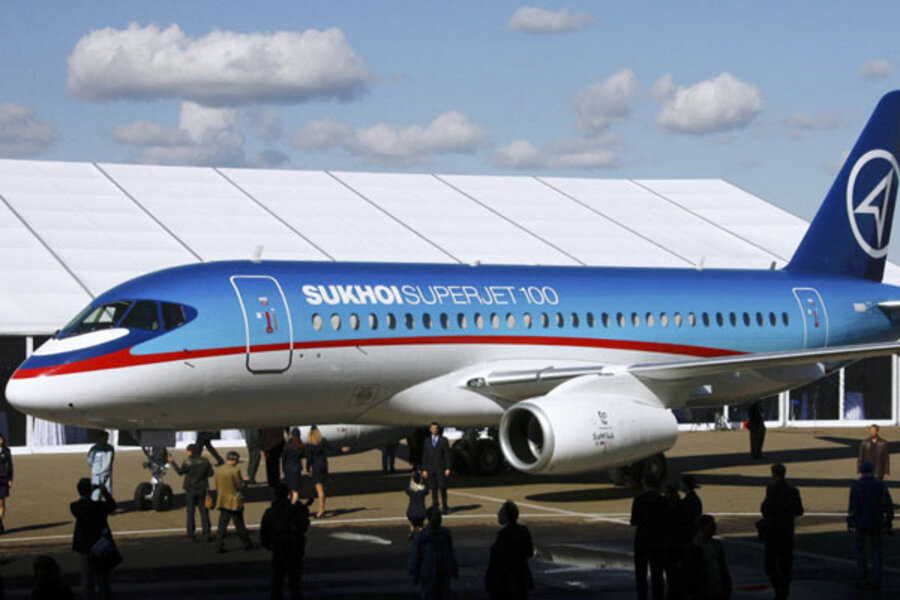Searchers find wreckage of lost Russian plane in Indonesia
Loading...
Helicopters spotted the scattered wreckage a Russian-made passenger plane on the side of a mist-shrouded mountain Thursday after it disappeared during a demonstration flight in Indonesia with 47 people on board. There was no sign of survivors.
Family members who spent the night at the airport broke down in tears on hearing the news.
"Rescuers on the helicopters could clearly see the wreckage located at the top of Mount Salak," including the blue-and-white of the aircraft maker, said Gagah Prakoso, a spokesman for the Search and Rescue National Agency.
"There is no sign of any of the passengers," he said. "We're trying to move in closer to the wreckage now."
The Sukhoi Superjet-100, Russia's first new passenger jet since the fall of the Soviet Union two decades ago, left Halim Perdanakusuma Airport in Jakarta on Wednesday afternoon for the second demonstration flight of the day. Potential buyers and journalists were on board.
The jet dropped off the radar 21 minutes later, immediately after the crew asked air traffic control for permission to drop from 10,000 feet to 6,000 feet (3,000 meters to 1,800 meters), said Daryatmo, chief of the national search and rescue agency.
They didn't explain the change of course, he said. It was drizzling at the time, but not stormy, and there was no obvious signs of trouble.
More than 800 people, including soldiers and police, were taking part in the search and rescue operation. Though weather was clear Thursday, they were battling rugged and often steep terrain.
Four helicopters were carrying out aerial surveys.
Russia's aerospace industry was badly undermined in the economic turmoil following the 1991 collapse of the Soviet Union.
The Superjet — developed by the civil aircraft division of Sukhoi with the co-operation with Western partners — was widely considered the country's chance to regain a foothold in the international passenger plane market.
Its "Welcome Asia!" tour, which also included stops in Pakistan, Myanmar and Kazakhstan, was intended to drum up support.
Sunaryo from PT. Trimarga Rekatama, the company that helped organize Wednesday's event, said 47 people were on board, revising the figure downward from one.
Among them were eight Russians, all from Sukhoi companies and 37 Indonesians.
An American consultant with Indonesia's PT. Sriwijaya Airline and a Frenchman with aircraft engine-maker Snecma also were on board.
The Superjet — a 75- to 95-seat plane — was being touted as a challenger to similar-sized jets from Canada's Bombardier Inc. and Brazil's Embraer SA.
It made its inaugural commercial flight last year.
With a relatively low price tag of around $35 million, the plane has garnered around 170 orders. And Indonesia, a sprawling archipelagic nation of 240 million people with a fast-growing middle class, was considered one of the biggest potential customers.
Kartika Airlines — among dozens of airlines to have popped up in Indonesia in the last decade — and Sky Aviation had already placed orders for at least 42.
People involved in those plans said they were waiting for the results of the investigation before reconsidering. Most wanted to know whether the problem was mechanical or pilot error.







